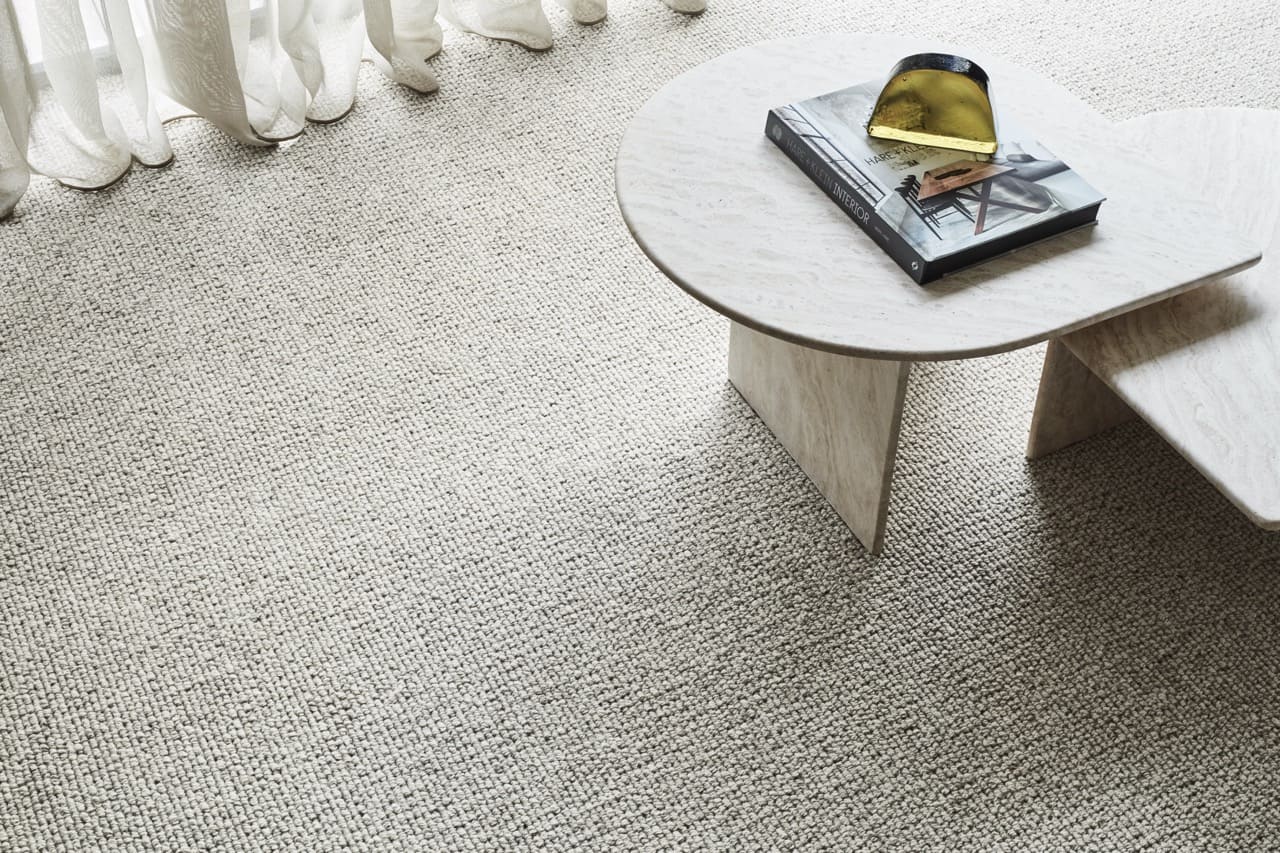
Free Measure & Quote
We bring our mobile showrooms directly to the comfort of your home
Enter your postcode to find your local Beare Flooring specialist, choose a date & time that suits – it’s that easy!
Fact Checked
Experience Based
Published on April 3, 2025.
As a landlord, every decision you make about your investment property affects its long-term value and ongoing appeal to tenants. Flooring is no exception. Choosing the best carpet for rental property is more than just a matter of style—it’s about balancing durability, cost, and maintenance with what tenants want in a home.
Unlike owner-occupied homes, rental properties experience more wear and tear, higher turnover, and inconsistent care. One tenant might be meticulous about cleaning, while the next may not be. That’s why carpet selection becomes a practical business decision. The right carpet can save you money on frequent replacements, reduce complaints, and help your property stand out in a competitive rental market.
But with so many carpet options available, nylon, polypropylene, loop pile, textured or solution-dyed, it’s not always easy to know what type of carpet is best. This guide will walk you through the key factors to consider when choosing carpet for your rental, so you can strike a balance between quality, appearance and cost-efficiency.

Rental properties operate under a different set of conditions compared to owner-occupied homes. Each tenant brings a unique lifestyle, and turnover often means more frequent cleaning, touch-ups, and potential carpet replacements, making it crucial for rental property owners to choose wisely. Landlords need a flooring solution that can handle all this without breaking the budget.
To choose the right carpet for your rental, it’s important to first understand how rental usage affects flooring performance and what qualities will make a carpet truly suitable for investment properties.
Your rental property isn’t just a place someone calls home—it’s a long-term investment. Choosing the right carpet helps protect that investment. A high-quality, stain-resistant carpet makes a solid first impression on potential tenants and reduces the risk of early wear and tear. This means fewer complaints, less downtime between tenants, and fewer replacements over time.
The wrong carpet—one that’s less durable or hard to clean—can quickly start to look worn, especially in high-traffic areas like the hallway or living room. This can shorten the lifespan of your flooring and lead to more frequent carpet replacements, which adds up in both time and money.
Several factors should guide your decision when choosing carpet for your rental:
High-traffic areas like entryways, lounges and hallways demand more from your flooring. In these spots, carpet tends to wear faster, and stains are more likely. For these zones, choosing a durable carpet with high resistance to wear and stain is crucial. Textured carpets or loop pile options provide better performance under heavy use and maintain their appearance longer than plush or cut pile varieties.
In lower-traffic areas such as bedrooms, there’s a bit more flexibility in selecting carpet materials that suit the style and preferences of your tenants. Here, softer carpets may be used to add a cosy, underfoot comfort without compromising too much on longevity.
Not all carpets are created equal, especially when it comes to rental properties. The best carpet for your rental should hold up against foot traffic, be easy to clean, and offer good resistance to stains and wear. Beyond just materials, factors like fibre type, pile construction, and texture all play a part in how well a carpet performs under pressure.
Landlords looking to invest in new carpet need to think beyond looks and consider which type of carpet is best suited to the demands of tenant use and regular turnover.
There’s a wide range of carpet options on the market, but not all are ideal for investment properties. The most common types include:
When choosing a carpet for your rental, it’s important to look for carpets made with durability and practicality in mind, as well as the benefits of carpet over hard flooring.
Carpet fibres directly influence how long the flooring lasts and how well it holds up against stains. For rental properties, two types stand out:
If you’re after a low-maintenance carpet that can handle daily use and the occasional spill, nylon or polypropylene will both serve you well. Polyester carpets are also available, but tend to be less durable over time, especially in busy households.
The pile of a carpet refers to how the fibres are cut or looped, and it plays a key role in how the carpet looks and lasts. Loop pile carpets are generally more durable and less likely to show stains or tracks, while cut pile carpets can offer more comfort but may wear faster with heavy use.
If your rental is a family home or experiences high turnover, a loop pile or low-pile carpet is often the better option. These resist matting and are easier to vacuum, keeping the space looking tidy between tenants.
When you’re choosing carpet, pile type is just as important as fibre. The right combination can mean fewer carpet replacements and a longer lifespan for your flooring.
Still weighing up your options or unsure which carpet is best for your rental? You’re not alone in seeking the most cost-effective flooring option for your rental property. Below are answers to some of the most common questions we get asked to help guide your decision and make sure your next carpet choice is a smart one.
The cost of carpet varies widely depending on material, pile type, and installation. On average, landlords can expect to pay between $25 to $55 per square metre, including underlay and installation. Basic polypropylene carpets sit at the lower end of that range, while high-quality nylon or solution-dyed nylon options tend to be more expensive.
Keep in mind that cost doesn’t just come from the material itself. Underlay, removal of worn carpet, trimming doors, and installation all contribute to the total price. Always ask for a full quote from your Beare Flooring expert so there are no surprises.
There’s no fixed rule, but most landlords replace carpet every 7 to 10 years, depending on its condition and quality. In high-traffic rentals or where tenants have pets or young children, carpet replacements might be needed sooner, sometimes every 5 years.
Staying ahead of worn carpet helps keep your property looking well-maintained and prevents issues during routine inspections. A tired, stained or flattened carpet can make even a freshly painted home look dated.
Neutral tones continue to be the most practical and popular choices for rental properties, especially among property owners aiming for broad tenant appeal. Shades like light grey, taupe, beige and charcoal blend well with most wall colours and furnishings, which is ideal when tenants bring their own décor.
Neutral colours also age better than lighter tones like cream or white, which tend to show stains quickly. Darker neutrals are especially helpful in hiding dirt between cleans, making them a low-maintenance carpet option.
You’ll also want to choose a colour that remains consistent over time. Solution dyed nylon is excellent in this regard, as its colour is locked into the fibre itself, resisting fading from sunlight and harsh cleaning products.
Unless your rental targets a niche market, stick with neutral colours. Bold designs might suit a short-term or boutique rental, but for long-term tenants, they’re likely to reduce the broad appeal of your property.
Neutral doesn’t mean bland—it means adaptable. When combined with the right carpet pile and texture, a neutral colour palette provides a clean, modern base that suits a wide range of tenants. This also makes it easier to repaint or update furniture without needing new flooring.
Choosing the right colour and pattern is just as important as choosing the right carpet fibre. Done well, it can reduce visible wear, simplify cleaning and increase your rental’s appeal with minimal effort.
Choosing the best carpet for your rental property doesn’t need to be overwhelming. Once you understand the key factors—durability, stain resistance, cost, maintenance, and style—you can narrow down your carpet options to the right carpet for your needs that truly suit your property and budget.
Before you book a free measure and quote with Beare Flooring, keep these final tips in mind to make the most informed choice for your investment.
When you’re comparing carpets, don’t just look at the colour and price. Ask questions that focus on long-term performance and suitability for rental use, especially regarding the benefits of carpet versus hard flooring options.
If you’re visiting a flooring showroom rather than organising a mobile showroom to visit you home, asking the right questions helps you avoid poor choices that may look good in-store but wear out quickly once installed.
In long-term rentals, some landlords offer tenants limited options when choosing new carpet, especially in premium properties or when renewing leases. This can increase tenant satisfaction and encourage longer stays.
If you do involve tenants, provide a shortlist of neutral, practical carpets from a reliable carpet range that suit your flooring budget. Keep control of the final decision while showing your tenant that their comfort and preferences are considered.
Several common pitfalls can lead to wasted money and faster wear, particularly when property owners overlook the importance of selecting the right carpet for their needs.
Avoiding these mistakes ensures your flooring lasts longer, performs better, and keeps your rental property looking fresh between tenancies.
The right flooring can elevate your rental, reduce ongoing costs and attract better tenants. Whether you’re fitting out a new property or replacing tired, worn carpet, take the time to explore the best options that align with your needs.
Let Beare Flooring help you choose the right carpet for your rental, durable, cost-effective and tenant-friendly. Our experts bring samples to your door, provide honest advice, and handle everything from measuring to installation.
Book your free in-home measure and quote today and find the perfect flooring solution for your rental property.
It’s incredibly easy to organise your complimentary measure and quote at a time that suits you. Our flooring specialists will bring our range of samples to your home and provide you with the friendly expert advice you need to make the perfect selection.
Book in your no-obligation measure and quote today.

We bring our mobile showrooms directly to the comfort of your home
Enter your postcode to find your local Beare Flooring specialist, choose a date & time that suits – it’s that easy!
Unsure on if you want to book a free in home consultation yet? That’s ok, give us a call to chat.
Want to speak to someone before confirming your appointment?